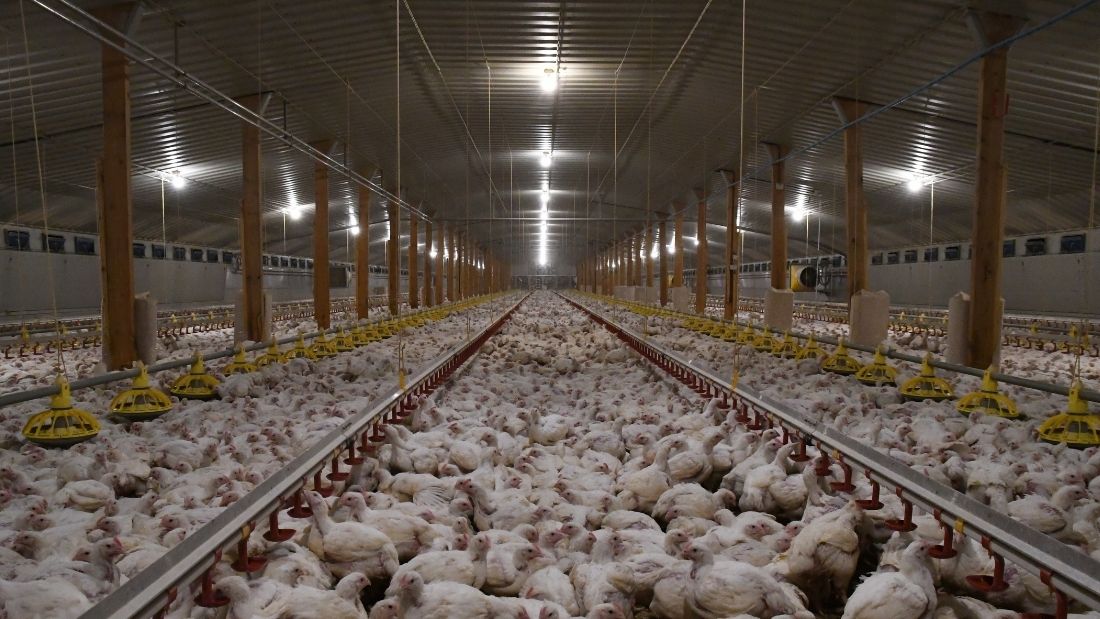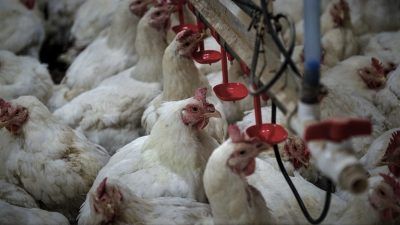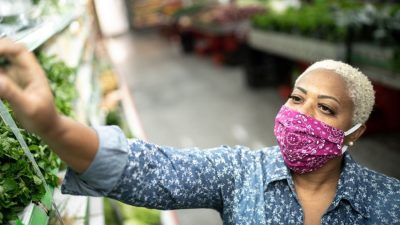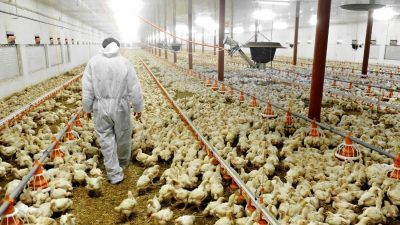Bird flu
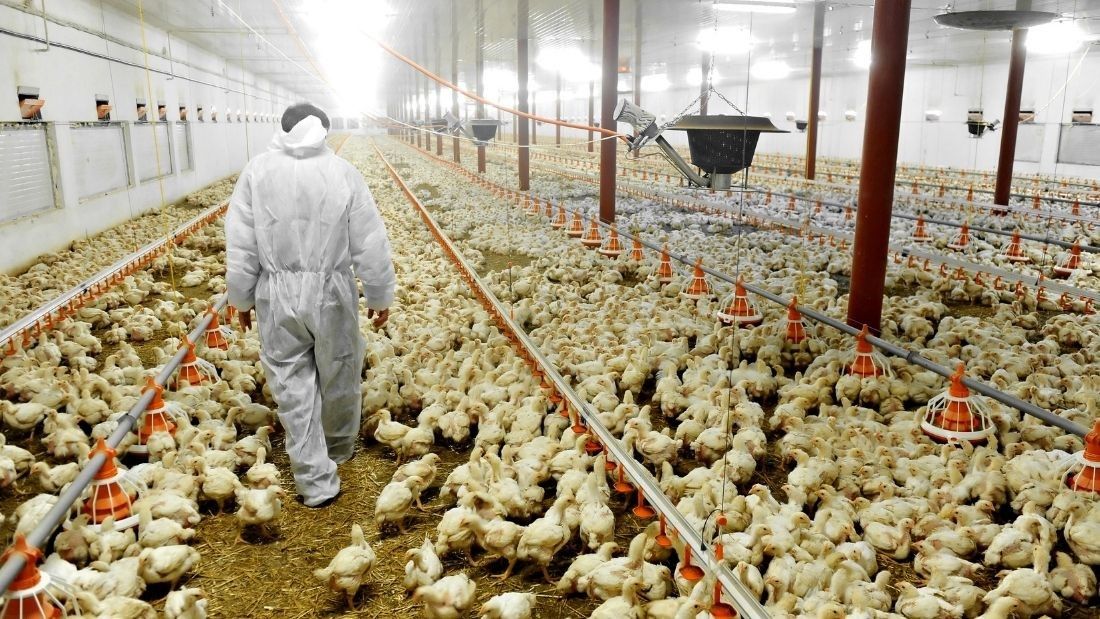
Avian influenza (bird flu) viruses are among the most dangerous viruses that can affect humans, with a case fatality rate of up to 50 per cent.
Low pathogenic bird flu viruses have spread naturally between wild waterfowl for thousands of years, usually causing no illness. However, when they spread to domestic poultry, in overcrowded farms or markets, they can mutate and become more deadly and have caused illness and death in millions of farmed birds. These deadlier strains have also spread to and killed wild birds and in recent years, thousands have died in the UK alone.
Although they don’t spread easily to people, scientists are concerned that if a bird flu virus mutates and becomes more easily spread, we could face a deadly flu pandemic. One strain of particular concern is H5N1. Since 2003, almost 1,000 people globally have been infected, mostly from close contact with infected birds, and nearly half of them have died. If this virus mutates and becomes more transmissible between infected humans, we could face another global pandemic.
Scientists have been warning us for years about the pandemic threat posed by factory farms and wildlife markets and many fear that the next pandemic will be caused by a bird flu virus, making the jump to humans from poultry or pigs.
We’ve been here before; Ebola, HIV, SARS and MERS are all examples of zoonotic diseases that spread to humans from animals. These ‘spillover’ events can occur when humans invade wildlife habitats, at wet markets – where many different wild and domesticated animals are sold live and slaughtered – and in factory farms, where large numbers of animals are crammed into sheds, in horrific conditions.

Bird flu is a classic example of a zoonotic disease, and most pandemics can be traced back to avian influenza viruses:
- 1918 Spanish flu
The Spanish flu pandemic was one of the deadliest ever, killing an estimated 50 million people. Caused by an H1N1 avian influenza virus, it’s not known precisely which animal it originated from but it was of avian origin, so likely came from farmed poultry or wild birds.
The next three pandemics were caused by pick-and-mix viruses of avian origin, combining elements from more than one virus. These are known as ‘reassortant viruses’ and may have evolved in pigs:
- 1957 Asian flu
The H2N2 virus that caused the Asian flu pandemic (estimated to have killed around 1.1 million people), was probably the product of a wild duck virus combining, possibly in pigs, with one from humans. H2N2 persists in wild and domestic birds and a re-emergence in humans could pose a significant pandemic threat.
- 1968 Hong Kong flu
The H3N2 virus responsible for the Hong Kong flu pandemic that killed up to four million people is thought to have evolved from H2N2 by combining with another avian influenza virus (again, possibly in pigs) to produce a new strain capable of infecting humans.
- 2009 swine flu
Another H1N1 virus was responsible for the swine flu pandemic in 2009 that began in pigs in Mexico and spread rapidly across the world, killing up to half a million people. The H1N1 virus responsible contained elements of viruses from humans, birds, North American pigs and Eurasian pigs. The mixing most likely occurred in live pigs being traded internationally.
Swine flu is now one of the seasonal flu viruses that circulate each winter and if you’ve had flu in recent years, there’s a good chance it was this one.
Intensive poultry production provides a perfect breeding ground for mutating viruses. Chickens are raised in closed, filthy, stressful and crowded industrial facilities. We are literally handing viruses and other pathogens (see antibiotic resistance) the perfect opportunity to mutate into more deadly forms – a perfect storm of our own making.
There is strong scientific evidence showing that industrial poultry farming (factory-style) is a major driver of the emergence, spread and worsening of bird flu. Here are some of the reasons why:
- crowded, high-density, stressful and often unhygienic conditions in large poultry farms create ideal conditions for disease to spread rapidly and mutate
- most deadly strains of bird flu originate in the poultry sector, not in wild birds – several documented outbreaks show low pathogenic viruses introduced from wild birds mutating into highly pathogenic ones while circulating in intensive poultry systems
- once highly pathogenic strains emerge, they can spill over from poultry farms into wild bird populations. The disease then circulates among wild birds
- viruses may spread on contaminated farm equipment, clothing, feed, bedding and waste (manure, faeces) can act as vectors – spreading the virus to the surrounding environment, affecting wild birds (especially waterfowl) and facilitating transmission
So, rather than seeing factory farms as victims of bird flu, consider how they play a central role in creating and spreading dangerous virus strains to wild birds and beyond. Blaming wild migratory birds ignores the significant contribution of intensive farming to the problem.
Pig farming has changed dramatically in recent decades and scientists warn that pigs could also play an increasingly important role as vectors of pandemic threats. Here are some of the reasons why:
- pigs are susceptible to flu infection from birds, humans and other pigs, and viruses can combine in them to produce new ones, previously unseen – this mixing of viral genes is called reassortment
- when you move factory-farmed pigs around the world, you risk spreading diseases. That’s exactly what happened when the international trading of live pigs led to the emergence of a completely new virus that caused the 2009 swine flu pandemic
- scientists say that flu viruses had been circulating in pigs for at least 10 years before the 2009 pandemic, and suggest that lack of monitoring allowed this potential pandemic strain to persist and evolve for many years undetected
Again, the detrimental impacts of factory farming must be addressed if we are going to reduce the risks of a flu pandemic.
The poultry industry likes to blame the spread of bird flu on migratory birds but the science shows how factory farms are the real problem.
Here’s why:
- wild birds are more likely to carry low pathogenic strains of bird flu, which do not pose such a problem
- low pathogenic strains mutate into more deadly high pathogenic strains in factory farms, wild birds may then be infected with the more deadly strains emerging from poultry farms
- wild birds may be infected directly, through contact with infected droppings, saliva, nasal secretions, or via contaminated water, food and soil
- because high pathogenic strains are more virulent, once a wild bird gets infected, the disease can cause serious illness and death, unlike older influenza viruses that circulated in wild waterfowl without causing harm
Human commercial activities, particularly those associated with poultry and pigs to some extent, are the major factors responsible for the global spread of bird flu. In other words, the current bird flu is more deadly because the virus has evolved (or been amplified) into a highly pathogenic form, which kills birds rather than just infecting them silently.
If we are to avoid a bird flu pandemic, then we need to end factory farming before it ends us!

How Bird Flu Could Become A ‘Global Tsunami’ Affecting Humans As Outbreak Rages On
The UK is currently witnessing the worst bird flu outbreak in its history amid ongoing COVID-19 struggles – but is the government doing enough to handle it?




